HygroShape is a first of its kind concept for self-shaping furniture. Using purely the natural, intrinsic properties of wood, furniture pieces are produced in an efficient and compact flat state, materially programmed to shape themselves when unpacked. It happens effortlessly, in silence, without human interaction, tools, or assembly instructions. The project uses material programming to harness the unique potentials of sustainable materials and practices.
HygroShape is a concept for a new type of bio-inspired, bio-based and bio-shaped furniture. The furniture is produced in flatpack configurations, materially programmed to shape itself when unpacked. In the flat state the fabrication can be drastically simplified and at the same time the transport volume is up to 30 times smaller, uses up less cargo space and can therefore reduce CO2 emissions. The self-shaping mechanism is activated when the furniture is exposed to indoor conditions and happens completely autonomously without requiring tools, assembly instructions or expertise by the user.
The magic behind the self-shaping motion lies purely in the natural build-up of the wood cells, which swell or shrink anisotropically in reaction to the moisture in the air that surrounds them. This property is well known to the woodworker and usually seen as a major drawback of wood because when unchecked in the drying process it can result in large uncontrolled deformations. However, when these forces are carefully understood, they can serve as a purely passive generator of form, replacing heavy machines or formwork. In a multilayered composition the shrinkage of the wood can be used to physically code a shape into the furniture and thus precisely predict the resulting curvature.
The design of each HygroShape piece emerges from the unique material behaviors from which they are made. The design language is sleek curvature in thin surfaces. From some angles the structure of the chair disappears nearly entirely while others reveal each piece’s daring expression of structural boundaries. Inherently the self-shaping leads to an honest and clean design, absent of standard angled connections or mechanical hardware. The result is a stable yet compliant structure for a dynamic interaction with the body. While the overall shape and stability is guaranteed, natural variation in the material structuring lends each piece a refined organic uniqueness.
Please highlight how the project can be exemplary in this context
Conventionally curved wood furniture is produced in relatively energy-intensive processes. Wood is either processed to very thin lamellae that can be formed into the desired curved shapes or made more flexible by treatment with steam and then laminated and mechanically pressed. This requires many machining and material processing steps and is dependent on industrial molds which are very expensive and therefore only feasible for larger series. Another option for generating curved surfaces is kerfing of the wood, in which thicker wood boards are cut by a saw iteratively, leaving deep notches with the width of the saw. Glued together to a carefully programmed counterpart, curved timber pieces can be produced without a mold - but at the cost of almost half the material volume transformed into sawdust. With this strategy the structural integrity of the wood is also impaired so that it requires higher material thicknesses. These curved wood furniture pieces are usually shipped in big packages to the user, occupying a lot of cargo space because of their intricate shape.
With the self-shaping method, fewer, thicker wood lamellae can be used, which reduces machining steps and waste production. They shape themselves autonomously and thus make molds obsolete. Additionally, they are programmed to only shape once they have reached their final destination and therefore optimized for a small and flat shipping volume. All these features are inherent to the natural, local and renewable material wood and can be realized in a mono-material product. This way HygroShape shows new pathways for how to utilize bio-based, renewable materials
Please highlight how the project can be exemplary in this context
In recent years we have witnessed the furniture markets flooded with cheap, near single use, furniture often made from particle board and coated with plastic. Apart from the fact that these kinds of wood and adhesive composites are almost impossible to separate and therefore very difficult to recycle, they also have a very short expected lifetime. In terms of haptics and aesthetics, they look and feel unnatural and unappealing. Often they even display an inauthentic wood surface texture on top of other materials. With HygroShape we aim to satisfy user needs for an honest and clean design, made from truly natural materials.. The design of each piece emerges from the unique material behaviors and structuring from which they are made. The design language is sleek curvature in thin surfaces. From some angles the structure of the chair disappears nearly entirely while others reveal each piece’s daring expression of structural boundaries. Inherently the self-shaping leads to an honest and clean design, absent of standard angled connections or mechanical hardware. The result is a stable yet compliant structure for a dynamic interaction with the body.
We think that HygroShape stands prototypically for a trend to value natural surfaces and honest design. It showcases the potentials embedded in wood and empowers the material to be seen as more than just matter that something is made from but as the design driver and generator of form. HygroShape can be exemplary in the fascination and curiosity for natural materials such as wood.
Please highlight how the project can be exemplary in this context
The biological phenomenon on which the shaping process is based, is in our eyes an excellent opportunity to draw young people’s attention to the power of nature. In girlsday events in 2021 and 2022 we have used the projectto as an teaching in STEM for how biology, engineering, architecture and design can come together (Link). From their amazed reaction it was visible that they hadn’t been exposed to examples like this before and that for some of them the perspective of merging the fields of design and engineering was both new and very attractive.
Conventional curved furniture is made with large molds - a process that is only economical in large quantities. Consequently this means that customization of furniture is usually only feasible to a very small degree which leads to a “one size fits all” philosophy. With the self-shaping method on the other hand, the curvature is a result of the moisture content in the wood and the individual layer buildup. Both parameters can be controlled individually without additional effort. This means custom designs are possible without increased labor, cost or energy usage just by modifying parameters in the digital workflow. By doing so the HygroShape furniture can satisfy a large variety of its users’ needs and preferences.
Please highlight how this approach can be exemplary
In our point of view forward looking furniture needs to combine all three dimensions.
In a very practical way the production process of HygroShape products is entirely based on reconnecting with nature. When a tree trunk is cut up into boards, the grain angle of the resulting board is based on its relative position to the growth rings of the tree. Boards in which the growth rings are almost vertical, are usually higher quality wood because they deform less while they are drying. Boards with very inclined growth rings, however, are prone to bend in the drying process and therefore unwanted for many applications. With HygroShape on the other hand we utilize the natural material in a more holistic way. The grain angles are an essential part of the digital planning process and a tool to achieve smooth transitions in curvature by taking into account the different swelling and bending properties from the start. Instead of trying to homogenize and break down the natural variations in the wood, previously discarded functionality is capitalized which opens the door to resource and manufacturing efficiency.
HygroShape products encourage the user to reconnect with nature through questioning how this process works and how the shape works without any energy or high-tech mechanism. The simple, biomimetic principle the project is based on, is the same that helps pine cones or beechnuts release their seeds. Each scale of the pine cone is constructed of an anisotropic fiber composite forming both protection from predators and a functional bilayer which when the cone is living maintains a high amount of water. However, when the cone falls from the tree the scales dry out causing them to slowly curve open to release the seed. Like the cone scales, HygroShape utilizes a similar principle of passive shaping through drying, making the shaping reliable, robust and zero operational energy. By showcasing this clever biological principle we envision that every user of our products is as inspired and excited about nature as we are.
Please also explain the benefits that derived from their involvement.
We use the project to showcase how material programming can enable more sustainable practices and empower natural materials in lectures and workshops both in the University of Stuttgart and externally. In our teaching at Uni Stuttgart we explore together with master students of the interdisciplinary program ITECH how the self-shaping mechanism can be scaled up to the architectural realm. Through their inspirational involvement and hard work a building demonstrator with the same technology will soon be realized. In events with school girls (girlsday workshops 2021, 2022) and in external lectures at Weitzman School of Design (UPenn, 14.02.22),
MIT (Bio-inspired, bio-based, bio-shaped - Material programming for self-shaping, 07.04.22) HygroShape serves as a basis to explain Material Programming. Furthermore, we use local events with designers, engineers and architects (AED, 23.03.2022) to get valuable feedback on the design of the demonstrators
The furniture market is dominated by only a handful of key global players. Local carpenters can’t compete because they lack the necessary machines and setup to produce in large quantities. With HygroShape to machines going beyond a well equipped carpentry are necessary. This way the distributed production by local carpenters is possible. Wood as raw material is easy to get and globally available because the self-shaping principle is not based on specific wood types
The project represents a paradigm shift in design and manufacturing processes with wood from energy-intensive forming methods that require extensive machining to a process where the material shapes entirely by itself. While methods of bending wood into different shapes for structure and aesthetics have existed for centuries and have become recognized industrial processes, they still mostly rely on brute mechanical force for the shaping process. Similarly, an understanding of how wood deforms due to changes in moisture content is well known in practice and academics. However, a shift in design thinking, as well as new computational simulations for more accurate prediction, now allow us to use this moisture induced swelling and shrinking to design and program specific self-shaping movements at larger and larger scale.
Historically furniture is shaped in a factory or by a craftsperson and then moved in its 3D form to the dwelling where it will be used. More recently, design and manufacturing has shifted to a flatpack concept in which collections of parts are produced specifically to nest in a compact flat package for efficient transport to the end user. This leaves the responsibility of assembly to the user, a process necessitating instructions, tools, and time. In parallel the design of flat pack furniture is directly limited by transport and manufacturing constraints. HygroShape introduces a new flatpack, one in which the shaping is embedded directly within the material itself, leading to a simple and effortless assembly. Each piece is manufactured and transported in a highly efficient flat state less than 3 cm in total thickness with the ability to shape to the height of 50 cm the standard height of a chair, which represents up to an astounding 30 times increase in the bounding volume.
Please provide clear documentation, communication of methodology and principles in this context.
The principles applied in this project bear the potential of applications in a wide range of contexts. Coming from the field of architecture, we first and foremost see the potential for construction. As timber building components, curved wood has advantages going far beyond the appealing organic shape. With curved elements higher structural stiffness and therefore thinner cross sections can be achieved. These high curvature thin walled structures are lightweight and structurally efficient but are still predominantly made from materials and processes with high embodied energy. Typical solutions use steel, aluminum, plastic composites or steel reinforced combined with casting, forming or extrusion to a cylindruical geometry. Wood, a natural, sustainable material combined with an innovative self-shaping manufacturing method offers the potential for a new, ecological and structurally favorable solution for curved building components
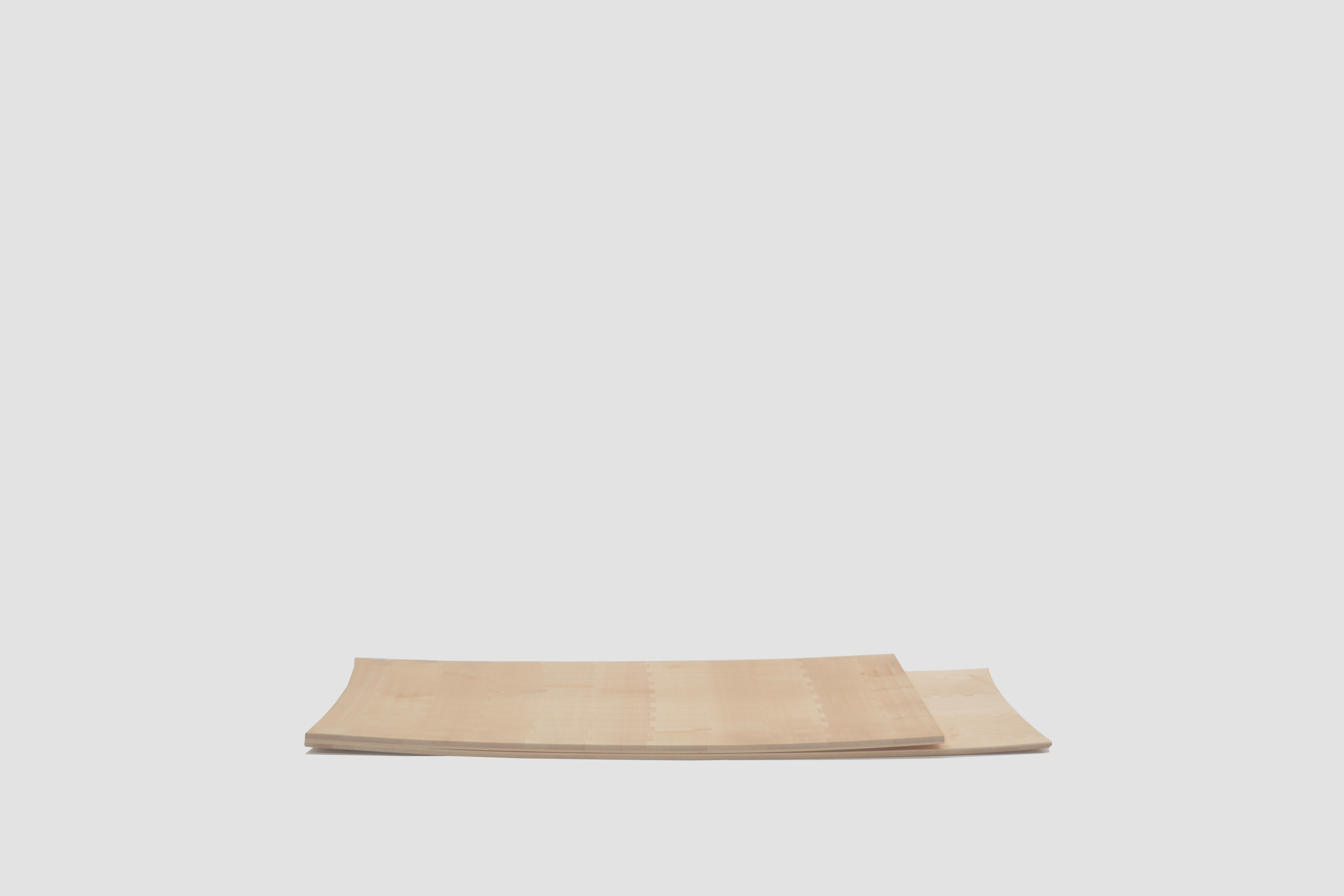
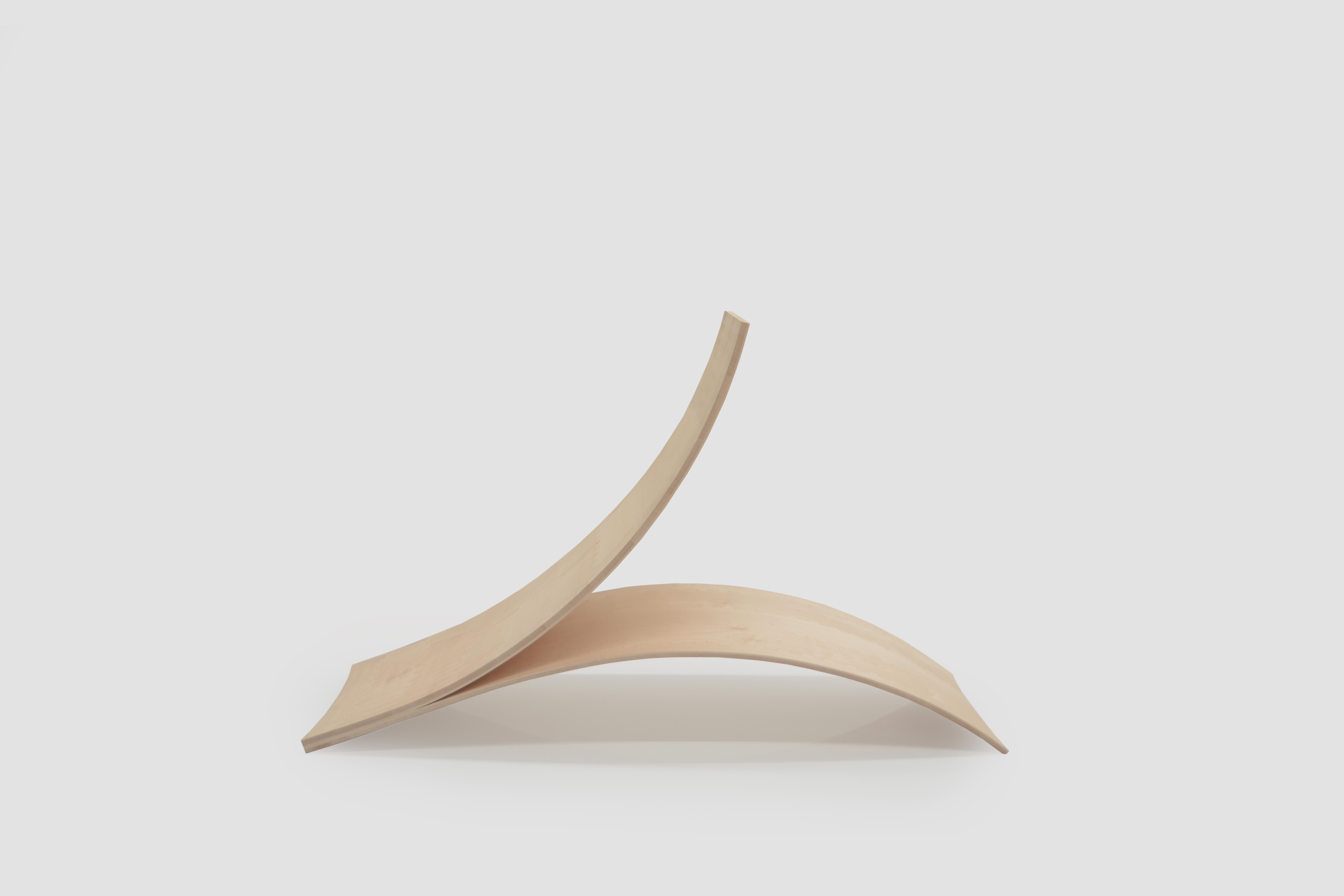
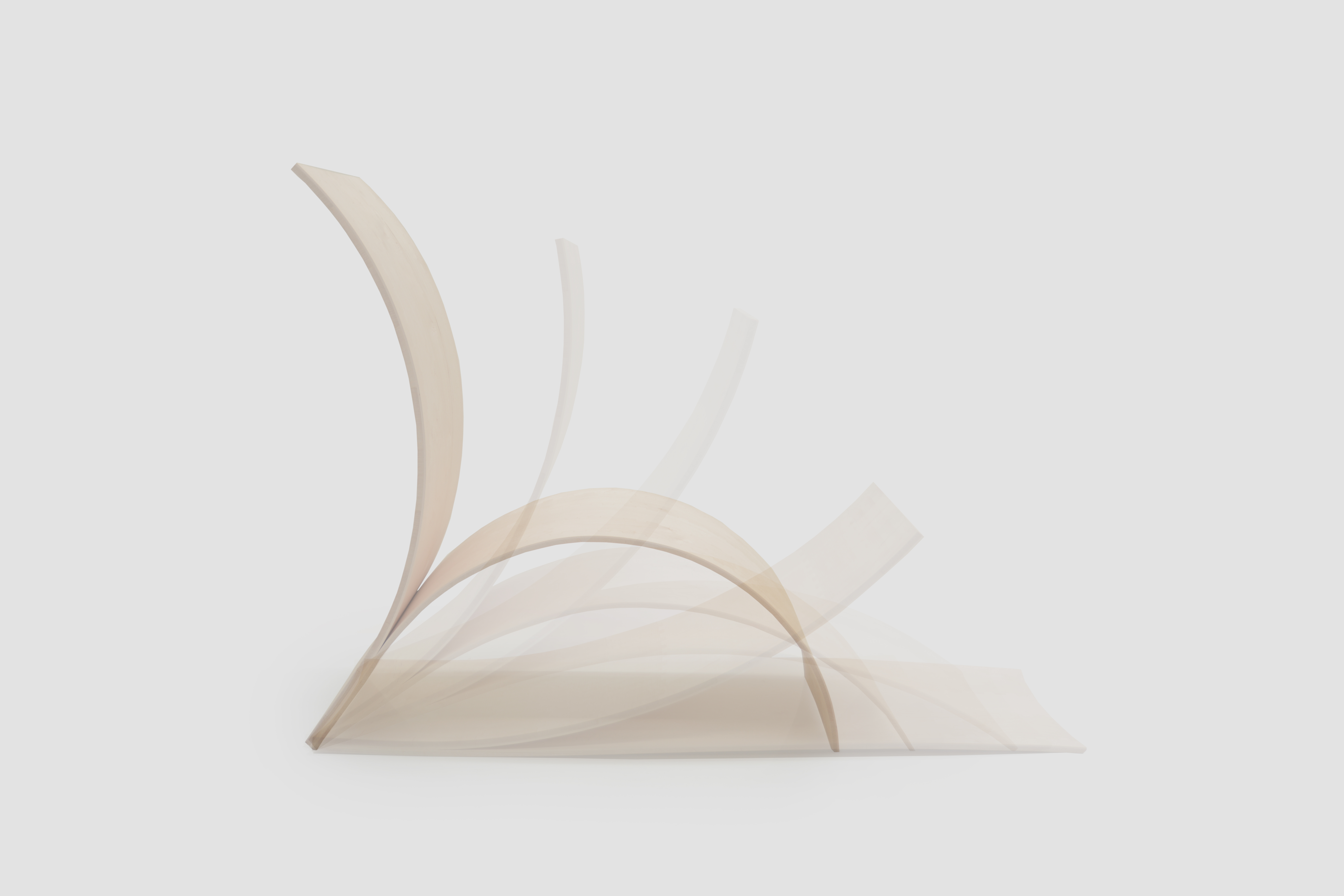
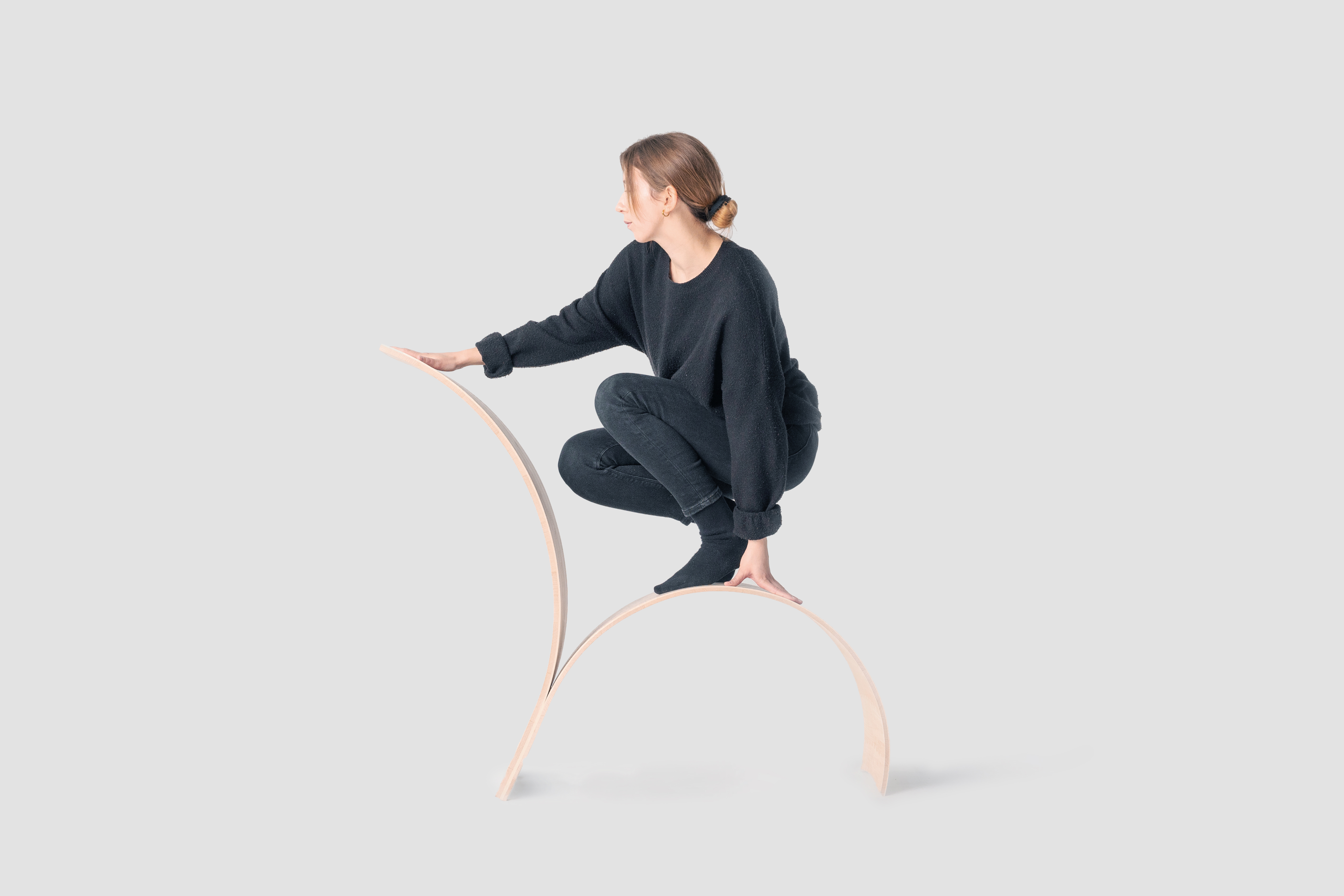
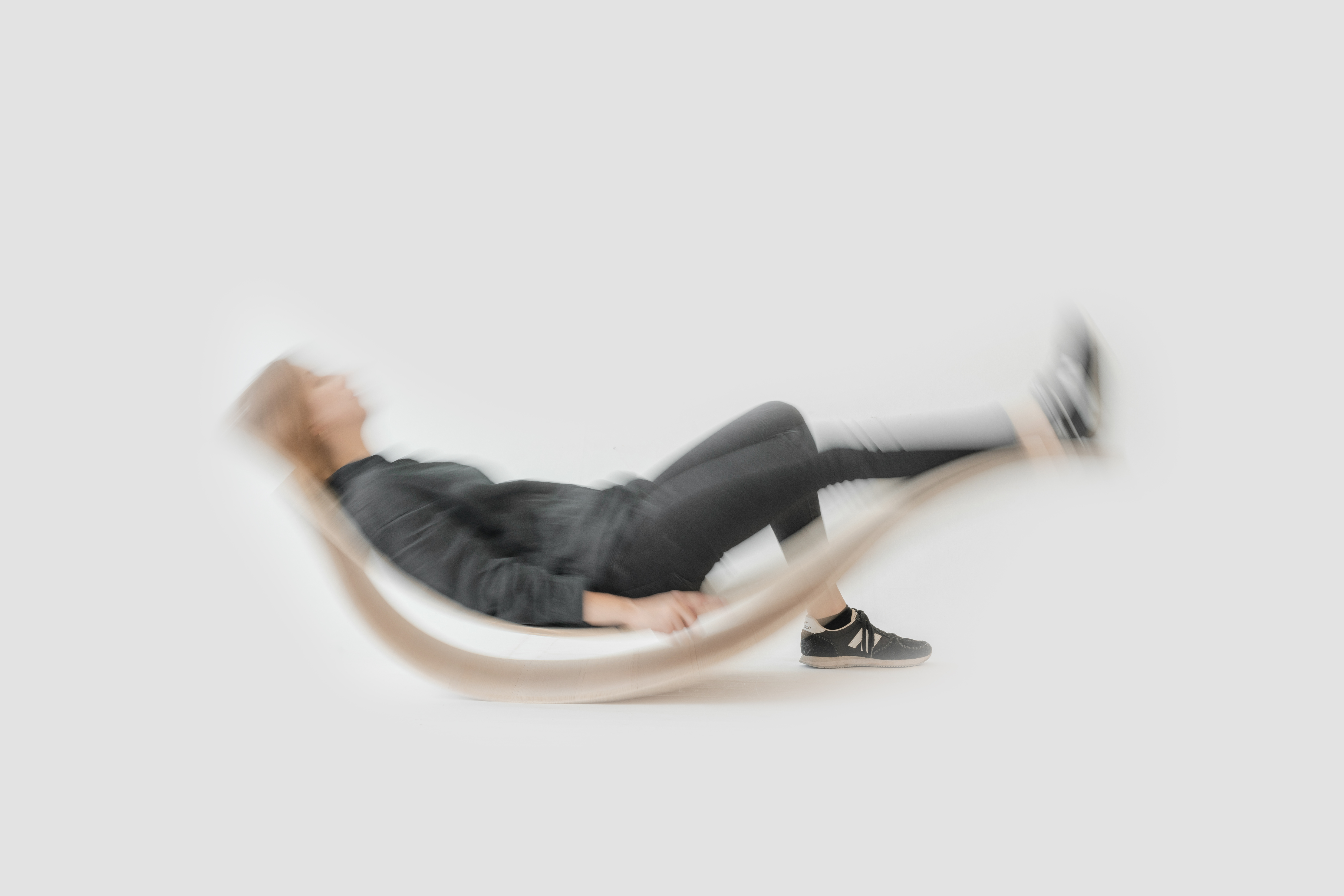
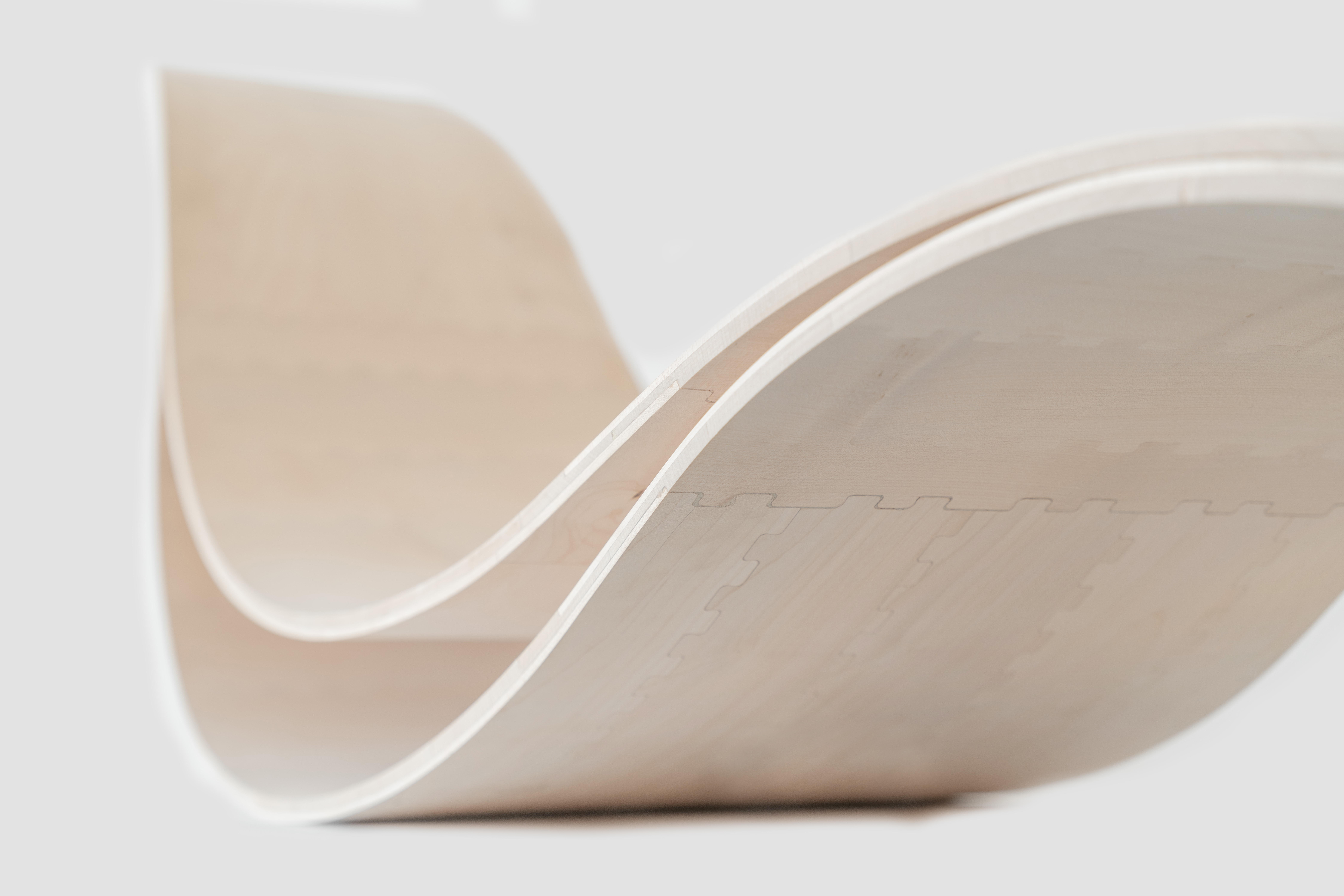
@ICD, university of Stuttgart, 2022
Content licensed to the European Union.